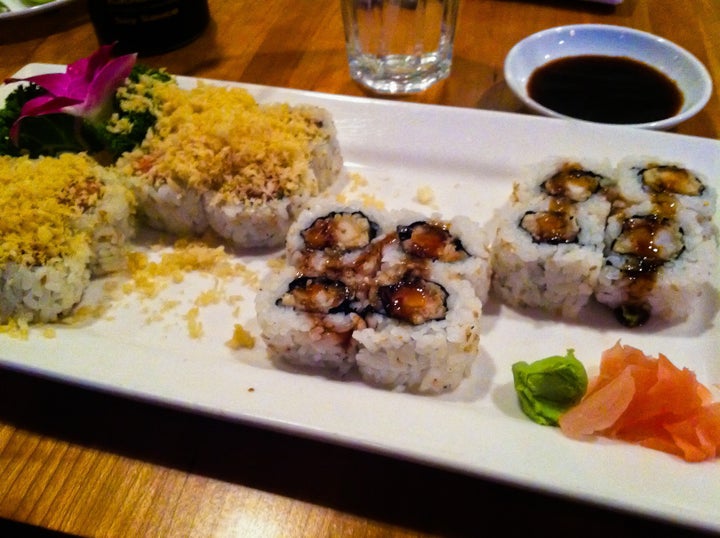
A few months after the US release of Jiro Dreams of Sushi, another documentary about chefs reaches the American screens: Step Up to the Plate. The new movie shares a few core themes with Jiro, namely the fascination with the world of haute cuisine and the extraordinary abilities of great chefs. The two films, together with others such as A Matter of Taste: Serving Up Paul Liebrandt and El Bulli: Cooking in Progress, might well suggest the beginning of a subgenre in food documentaries, marked by a shift of focus from systemic issues like sustainability, GMOs, and obesity to the aesthetic reflection about high-end cooking as self-expression and artistry.
In Step Up to the Plate, filmmaker Paul Lacoste zooms in on Bras, the three star Michelin restaurant in Laguiole, southern France, named after the father and son duo, Michel and Sébastien Bras. Michel, the founder of the establishment, is gradually retiring, while his son is taking over not only the business, but also the creative aspects of the kitchen. By following them in their daily activities, private lives, and travels abroad, Lacoste explores the challenges of the hand over in an industry where big personalities strive to assert their unique vision
Although the movie is mainly shot in France, a section takes place in Hokkaido, the northern Japanese island where the Bras' other homonymous restaurant opened in the Windsor Hotel in Toya. The geographic change allows us to get very close to the chefs' innovation process. While dealing with his father's constant scrutiny and at times annoying meddling, Sébastien experiments with new dishes inspired by local ingredients, first in France and then in Japan.
Both chefs express a strong desire to connect with the environment around them and with its products, whether they are at home or in a foreign location. Although they never mention it, the chefs are clearly working around the very French concept of Terroir, the almost mystical connection between soil, people, and foodstuffs in any given place.
The sleek and minimalist lines of the Bras restaurant, with its huge ceiling to floor windows overlooking the surrounding valleys, reinforces one of the main themes of the movie: food and cooking as an ongoing negotiation between nature and culture, between materiality and creativity. The chefs personally grow and pick the vegetables, plants, and flowers that make their dishes unique, both visually and in their flavor profile. Furthermore, the narration is organized around the four seasons, with long and pensive shots dedicated to landscape and light changes. The two Bras are also filmed while jogging or running with their families in the summer countryside, jumping across the crystalline waters of brooks from which they gather crawfish.
Time and the natural environment are not the only relevant elements influencing the chefs' creative process. They constantly refer to their own individual and family vicissitudes, steeped in the culinary traditions of the region where they grew up and still live. Their heavy accent pinpoints their southern origin, very far from the Parisian trends and fads. The documentary follows them while they participate in the local harvest festival, to which they have invited some of the biggest names in the restaurant world (Olivier Rollinger, Michel Troigros, and Pierre Gagnaire). We observe Sébastien as he tries to translate his personal story into a dish that includes elements that remind him of his grandmother (milk skin and chocolate), his mother (blackberry jelly and Laguiole cheese), and his father (bread).
The camera follows Sébastien staring at empty dishes and testing textures and flavors in a bare kitchen that appears so hygienic and immaculate that the whole process is suggestive of a scientific experiment. The slow and meticulous transition from inspiration to a structured idea to design to trial and error reinforces the perception that a great chef is not only a perfected artisan, but also an artist. However, the chefs' originality and eagerness to explore uncharted territory clash with their desire to ensure continuity, a crucial element in the restaurant's success. We hear Sébastien musing: "I don't feel like breaking everything just to put it back together again."
The filmmaker rarely succumbs to the lure of the popular visual style in food media that favors extreme close ups of dishes and preparation, amplifies kitchen sounds, and uses lighting to bring out textures and colors. Food porn only becomes the prevalent language when Sébastien performs in front of an audience in Paris. The sequence reminds us that, as hard as the chefs try to stay away from the spotlight, pervasive media and the trappings of celebrity are always lurking. After all, they have three Michelin stars to defend, and they have accepted to be featured in a documentary. They definitely know the rules of the game.